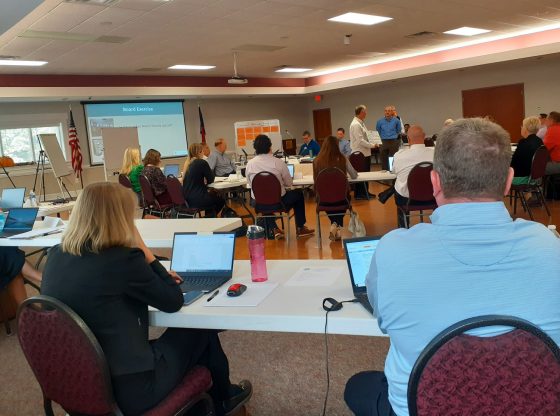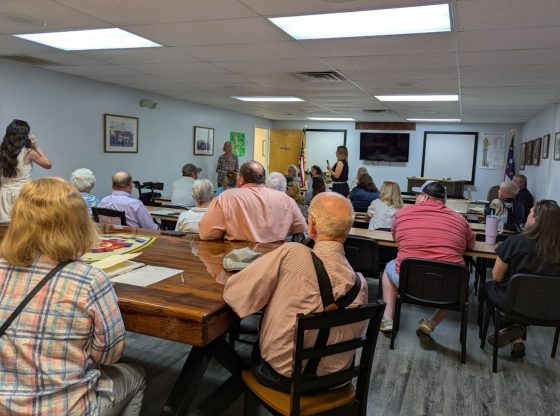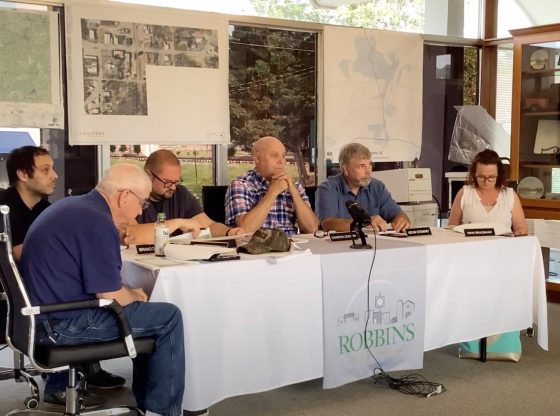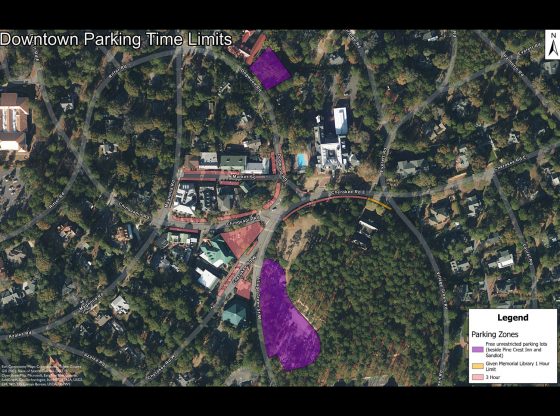On Thursday, Moore County Commissioners met to look at planning strategies as the county grows. The land use plan was the subject of the meeting, and updates and possible revisions were discussed.
The guest speaker at the meeting was Ben Hitchings, a planning consultant at Durham-based Green Heron Planning, LLC. Also attending the meeting were representatives of some of our municipalities and at least one member of the General Assembly.
Hitchings pointed out that public involvement in such planning is vital, as the idea is to empower people to participate in the decision-making process because “people will support what they helped to create.” As Moore County Commissioner Chair Nick Picerno pointed out, the mission was not to replace or rewrite the existing plan but to freshen and update it to reflect current conditions.
Hitchings noted while some counties in North Carolina have lost population, Moore County’s growth rate matches that of the state at large and outlined five steps to be considered in shaping growth:
*As part of the growth plan, it’s important to develop a shared vision for the future, which involves also employing the assistance of consultants such as Hitchings.
*Prepare and implement a strategy involving reviewing ordinances every few years to ensure they are in place as planning occurs. This is part of what Hitchings called the “local government toolbox.”
*Provide necessary resources for the implementation of planning measures.
*Implement that vision and make projects happen: physical implementation, paper implementation (ordinances,) and assembling the team to make the implementation happen.
*Track progress with annual updates.
He also explained that quasi-judicial action must address issues not outlined administratively. Administrative actions involve decisions made by administrative agencies based on their authority granted by ordinances or other regulations. These decisions are typically related to implementing and enforcing laws and regulations within their jurisdiction. Administrative actions are more flexible and may not follow formal legal procedures like those in a court of law. The agency may have more discretion in how they arrive at decisions.
By definition, quasi-judicial actions involve decisions made by administrative agencies that can be similar to judicial decisions. These actions involve the application of legal principles to specific cases or disputes, and they are similar to the process of a court trial. These decisions directly impact the rights or interests of individuals or entities involved. Quasi-judicial actions usually require a more formalized process that resembles a court proceeding. This may involve hearings, presenting evidence, cross-examination, and the issuance of formal written decisions.
Hitchings asked participants to write down what they thought made Moore County special. The answers were “hospitality,” “people” and “traditions,” referring to the fact that Moore County has long been considered a mecca for golfers and equestrians. When those items were on the white board, commissioners elaborated on their visions for where the county should go.
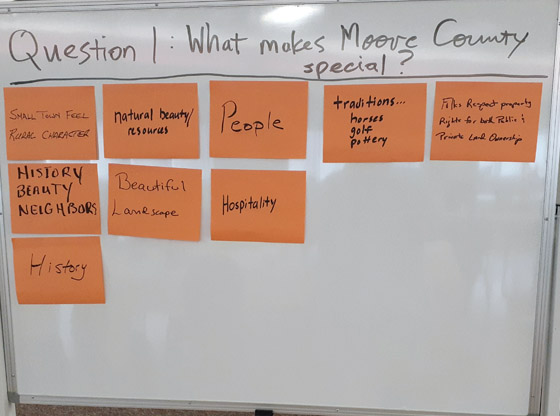
Representatives from various county municipalities attended the meeting and discussed what should be considered in reviewing the land use plan. They also raised concerns about land developments within their extraterritorial jurisdiction areas (ETJ.) Extraterritorial jurisdiction refers to a municipality’s ability to apply regulations beyond its territorial boundaries. In Moore County, an ETJ can extend up to three miles beyond municipal boundaries. Commissioners agreed to take up the issues involving ETJs at a later time.
Pinehurst Village Manager Jeff Sanborn said he favored “incremental growth over time,” where the development of residential areas would allow for these areas on the boundaries of existing municipalities, with future expansion dependent on the progress of development.
Another area discussed by Hitchings was the ever-present concerns, such as health care, good schools, and improving the quality of life in the county. Participants agreed that Moore County generally enjoys a good quality of life, and the strengths in the area include good health care, schools, a rural atmosphere, and the resorts contribute a great deal.
Property rights and how controlled reasonable growth can contribute to the county’s “laid-back” lifestyle were also brought up.
Southern Pines Town Manager Reagan Parsons expressed hope that an update and review of the land use plan could serve as an “opportunity to partner” with municipalities on multiple issues, including the management of power lines. The executive director of the Moore County Economic Development Partnership, Natalie Hawkins, echoed that sentiment and said the county should examine the unincorporated spaces in between municipalities in development plans.
It was generally agreed that the biggest challenges in growth include infrastructure, water, transportation and schools, as well as taking care of people, such as our homeless population (which continues to grow) and proper care of veterans. This involves taking care of people and accommodating growth while preserving the county’s natural beauty and ambience. Employment opportunities are part of these challenges so people can care for their families.
Some of these concerns involve jobs, an educated workforce, and investment in technology, such as expanding broadband access to all areas of the county.
Other input came from county residents, like Nick LaSala, a representative of Moore Family Farms, which promotes small family farms and stemming out-of-control development and urban sprawl. His group wants to retain the town and country atmosphere of Moore County. He said, “You could go into town and go to the local pub or restaurant, or Target, for example, and then within just a few miles, you’d be back out into the country.”
Commissioner Jim Von Canon echoed the group’s general attitude at the meeting, saying that keeping great schools and pleasant communities is something on which to continue work, as well as preserving the area’s rich history and beauty of the county for the future.
Hitchings called ongoing planning as the creation of a “framework on which we can hang details.”
Picerno said plans were more of a modification of the existing plan and that it’s not necessary “to reinvent; we just need to update it to reflect 2023.” He expressed his approval of what was discussed, calling it “a good opening … You have to throw things in the barrel, shake out the barrel, and then you start to find the line item details that can be worked on individually.”
The Board of Commissioners will hold its next meeting on Tuesday, Oct. 3, at 10:30 a.m.
 ~Article and photos by Sandhills Sentinel reporter Steve Biddle.
~Article and photos by Sandhills Sentinel reporter Steve Biddle.


